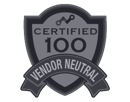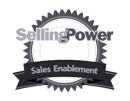
Capacity Beats Efficiency: How VMCL Gives Complex Sales Teams the Edge
The most effective B2B sales organizations are more than just efficient. They’re effective. They make good use of salespeople’s time, they bring home more (and more profitable) sales than their competitors, and they stay strategic to provide outstanding value to buyers and to their own company.
This level of effectiveness requires leaders to think strategically, and consistently build organizational capacity.
In their book Flock Not Clock, Derek and Laura Cabrera define organizational capacity in a manner that I find useful for understanding how sales teams can become more effective. Combining their definition with the VMCL (Vision, Mission, Capacity, Learning) framework provides a valuable lens into how we can build greater capacity in our sales organizations.
What Is Organizational Capacity?
The Cabreras define organizational capacity as “the energy to do the mission.” Using the VMCL framework, the definition would imply also working toward your vision. This definition does not limit itself to the number of employees, sophistication of technology, or efficiency of systems. Instead, it focuses purely on how well the organization can execute on its mission and vision, with the resources at its disposal.

Organizational capacity is not some abstract idea about how much your employees could do if they were working hard. It’s a concrete reflection of how much your organization actually is doing to execute their mission and getting closer to their vision.
To make this very simple, imagine that your mission is to fill a bathtub with water. You have one employee and a bucket. Imagine that the bucket has a hole in it. The hole leaks so fast that the bucket is empty by the time the employee gets from the source of the water to the bathtub.
“In other words,” the Cabreras explain in their book, “it is quite possible that you know exactly what your mission is and that you even have the opportunity to do your mission (i.e., you have a customer ready to be served), yet you do not have the capacity to actually serve them. That is why your organization needs to prepare itself by building capacity to do what it wants to do repeatedly.”
Similarly, using the bucket analogy, we can see that you can have two structures that are similar (an intact bucket and a bucket with a hole in it), but that have very different capacities in achieving the mission.
In Order to Effectively Increase Capacity, You Must Think In Terms of Systems
In the scenario with the bucket, imagine that you want to fix the problem and fulfill the mission. You could hire more employees, but the bucket still has a hole and you still can’t get water to the bathtub. You could increase incentives to get your employee to move faster than the bucket can leak, but this is an expensive solution and if they get worn out and have to quit before the job is done, you’ll fall even farther behind. You could increase the water pressure at the source, send the employee to training, paint the bucket, buy a scooter… but if the bucket still has a hole that leaks all of the water before you get to the bathtub, you still have an empty bathtub.
The best way to increase capacity in this circumstance is to repair the hole in the bucket.
In this simple example, almost anyone can see what the best solution is to increase capacity. In organizations, however, the problems are often bigger, more complex, and require a systems thinking viewpoint in order to solve.
Which Systems Are Most Important to Increase Capacity?
In the bucket example, the most important “system” to address is the bucket itself. Repair the bucket, and you instantly have substantially increased capacity. If you wanted to increase it further, and fill more bathtubs, you could buy more buckets, hire more employees, or even install plumbing that moves water directly from the source to the tub.
At each stage, in order to maximize the increase in capacity, you would need to know which systems are most important and which ones need improving. If you improve the wrong system, you will waste investment without maximizing your capacity. Hire more employees than you have buckets, and you are wasting their time. Buy more buckets than your employees can carry, and you are wasting buckets.
Determine which systems are primary to accomplishing your mission and which ones need to be improved to increase capacity.
Furthermore, you need to know which systems are primary and which systems are secondary. The bucket and the employee are primary systems, because they are directly necessary to accomplish the mission. But there are other systems involved. For instance, the employee needs shoes to protect their feet, and food to nourish them. They probably need a home and a car as well. The bucket needs a place to rest when it’s not in use. These are secondary systems. They are still important: An employee who has not eaten in three days is unlikely to be effective in carrying water. But they operate in support of the primary systems, not in place of them.
In an organization, systems are much more complicated and layered, but the job is the same: Determine which systems are primary to accomplishing your mission, which systems are secondary, and which ones need to be improved or increased in order to increase capacity.
Align System Capacity with Mission and Vision
Capacity that does not serve the company mission is not organizational capacity–it’s waste. In order to improve your organizational capacity, you must first understand what your mission and your vision are. Your vision is your big future goal, and the mission is what you do every day to work toward that goal.
I appreciate this clear definition of mission:
If you don’t align these two things, you end up with complicated excess and decreasing effectiveness.
“When the linkage between capacity and mission is broken or ‘de-coupled’ (i.e., when capacity does not directly serve the mission,” explain the Cabreras, “systems (departments, teams, processes) can regress to a state in which their purpose is maintaining themselves rather than furthering the larger organizational mission.”
We see this happen a lot in the sales world where we have large, complex software platforms that everyone hates and that get in the way of our work, but we are so invested in them that we continue to invest more in them.
On the other hand, when we are clear in our mission, we can select the software, employees, leadership, processes, and other systems to support that mission, rather than just themselves.
Vendors often attempt to change the buyer’s mental model about what their systems should or should not be able to do, in order to match the product that they have available. But if your mission and vision are clear, you can bypass the manipulative tactics and choose platforms and solutions that increase capacity rather than just joining the sea of bells and whistles.
Your CRM Should Be a Primary Capacity Builder, but Is Often Treated Like a Secondary
In sales organizations involved in complex B2B sales, technology systems are often a limiting factor in capacity building. We try to get our salespeople to do more, without providing them with the supportive structures to do so.
For instance, we have massive CRM systems that serve mostly as data capture engines. We treat them like they aren’t important to capacity, because all they do is serve up information.
But the primary platform that our salespeople spend most of their time in shouldn’t be a secondary capacity builder. It should be primary. When a sales platform elevates the processes, skills, coaching, strategy, and growth of the salespeople and their leaders, then it becomes a primary system in building capacity.
Increasing organizational capacity is so much more important than improving efficiency. You don’t need your employees to send emails faster, if they’re sending the wrong emails to the wrong people. What you need is primary systems that support their capacity to reach the right people in the right way.
When you increase organizational capacity, you accomplish your mission, and you get closer to your vision. In short, increasing sales organization capacity will put you ahead of your competition and win more deals.
Where are the weak links in your organization’s capacity? Where are you wasting energy investing in systems that support themselves rather than overall capacity?

By George Brontén
George is the founder & CEO of Membrain, the Sales Enablement CRM that makes it easy to execute your sales strategy. A life-long entrepreneur with 20 years of experience in the software space and a passion for sales and marketing. With the life motto "Don't settle for mainstream", he is always looking for new ways to achieve improved business results using innovative software, skills, and processes. George is also the author of the book Stop Killing Deals and the host of the Stop Killing Deals webinar and podcast series.
Find out more about George Brontén on LinkedIn







